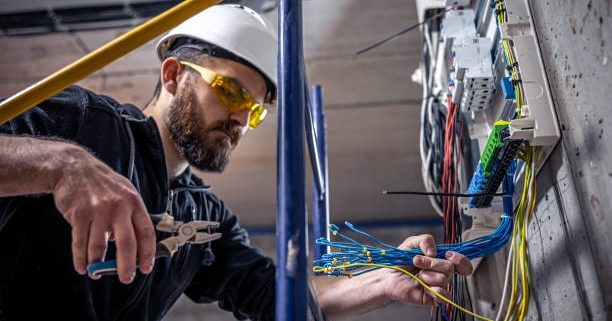Electricians in the US are in huge demand, fueled by the IRA
By Europe News | Originally posted on news.europenewss.com
The number of electricians employed in the US is at an all-time high in April, and they’re being paid better than ever. But can America sustain the supply of skilled tradespeople needed for these roles?
This area of the job market has been setting records setting records in employment since late 2021 and shot past the 1 million mark for the first time in more than 30 years in early 2022, according to the US Department of Labor. Now, the industry stands at 1.032 million employed in the US.
As a result, electricians are getting the best wages they’ve had in decades. In April, they saw a 7.4% year-over-year increase in their wages—the largest one-year change in their earnings since the Labor Department started recording this data in 2007.
How much money do electricians make?
Entry level electricians across the US regularly make $60,000 to $80,000, and some contracting companies are willing to pay off student debt to entice workers to come into the field, said Greg Sizemore, vice president of health, safety, environment, and workforce development at the Associated Builders and Contractors trade group.
As of April, government statistics show, the average American electrician earned $37.51 per hour, which comes out to $78,000 per year.
Why are electricians in such hot demand?
The need for electricians has partially been driven by a strong labor market that’s paying many different types of workers better. A recent boom in the housing market also has helped. But demand is also being boosted by federal funding for the clean energy transition.
The Inflation Reduction Act, passed in August 2022, allocated $369 billion in federal money toward enhancements to US energy infrastructure and efforts to alleviate issues contributing to global warming. Electricians will play a critical part in upgrading infrastructure as US households and businesses turn to electricity versus fossil fuels for powering appliances and other everyday living needs.
Can enough Americans be drawn to jobs in the trades?
But cultural attitudes about electrician jobs need to change if the US is going to successfully make the energy transition that the IRA is now funding.
“For a long time, we have valorized white-collar jobs and tech workers and the knowledge economy,” Leah Stokes, a professor of environmental politics at the University of California, Santa Barbara, recently told The New Yorker. “We need a whole new group of people to think about going into the trades, including people whose families have had white-collar jobs.”
Stanley Black & Decker, a Fortune 500 American manufacturing company, estimated in 2022 that job openings in the skilled trades include more than 650,000 construction jobs that need to be filled in the US, and 10 million manufacturing jobs globally.



